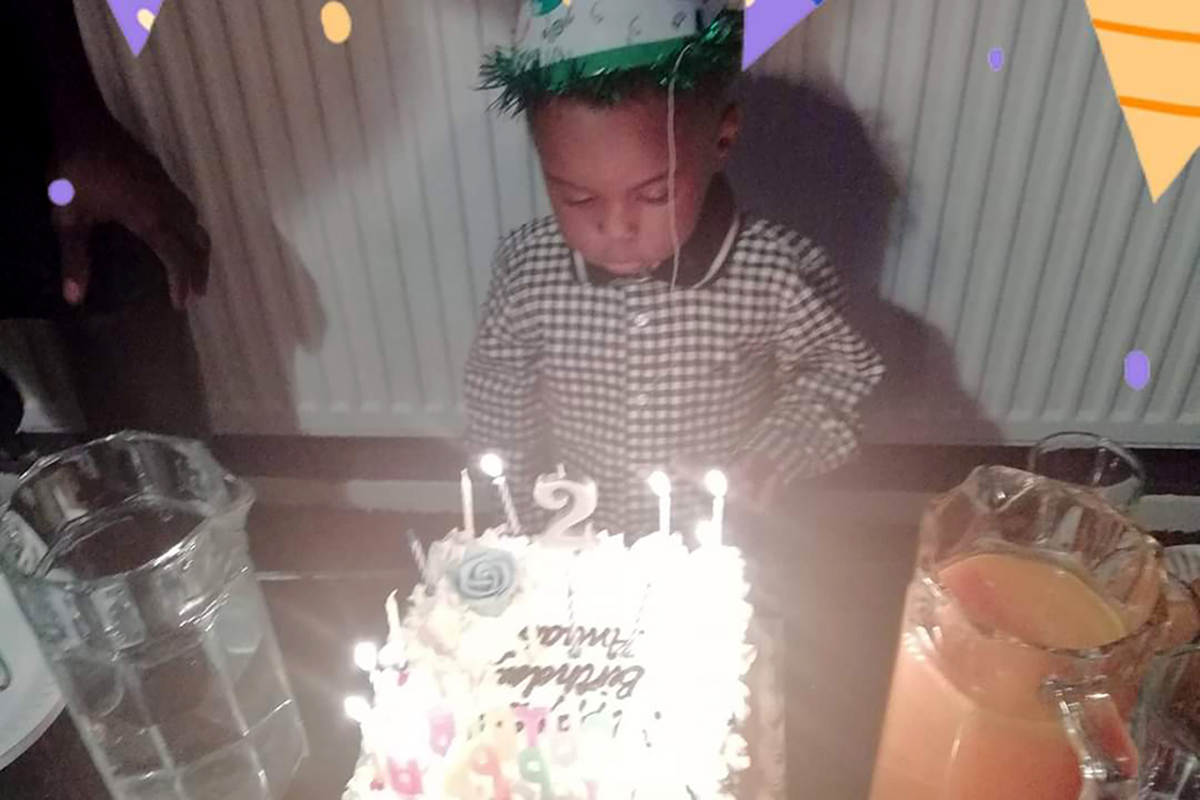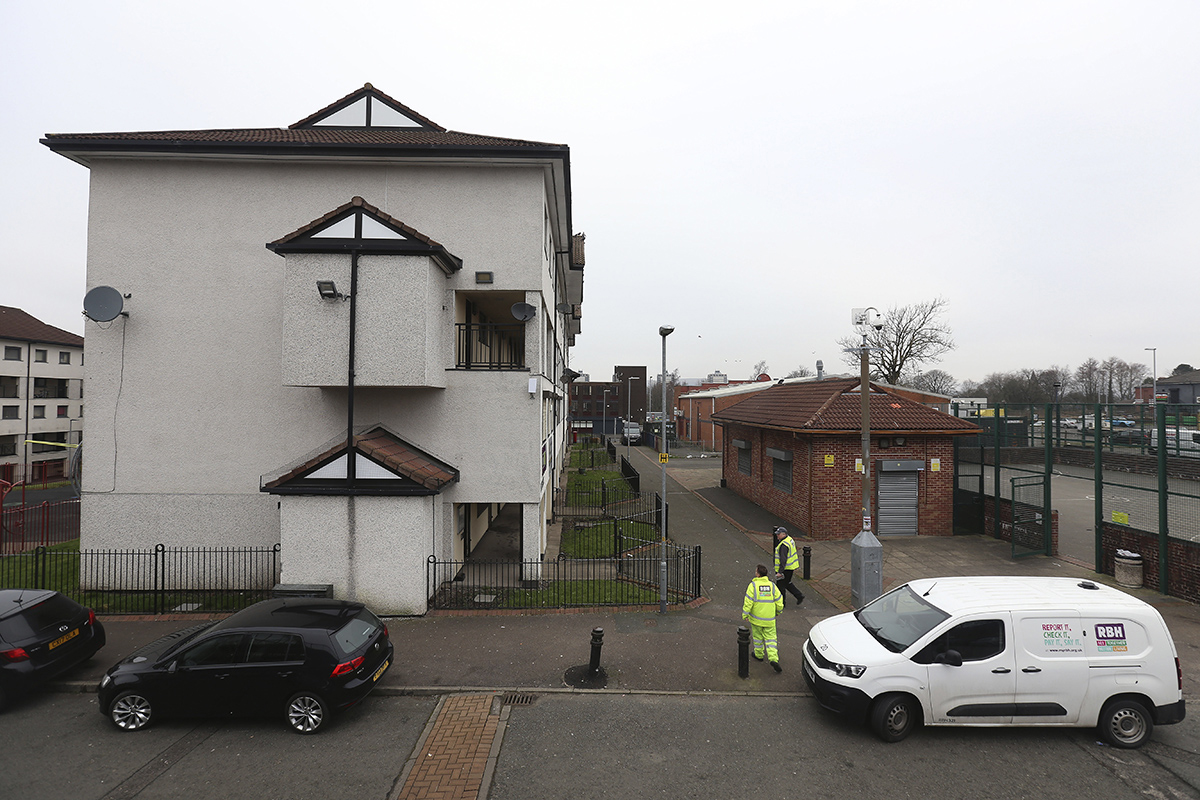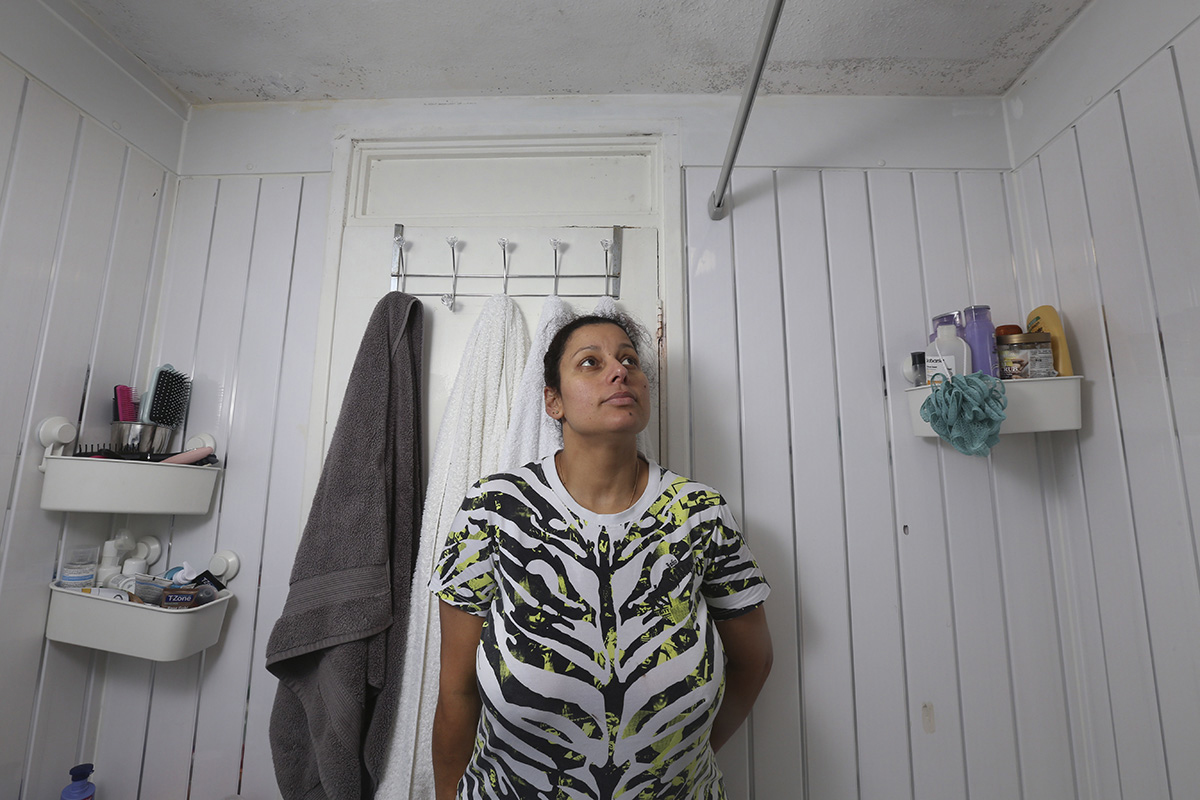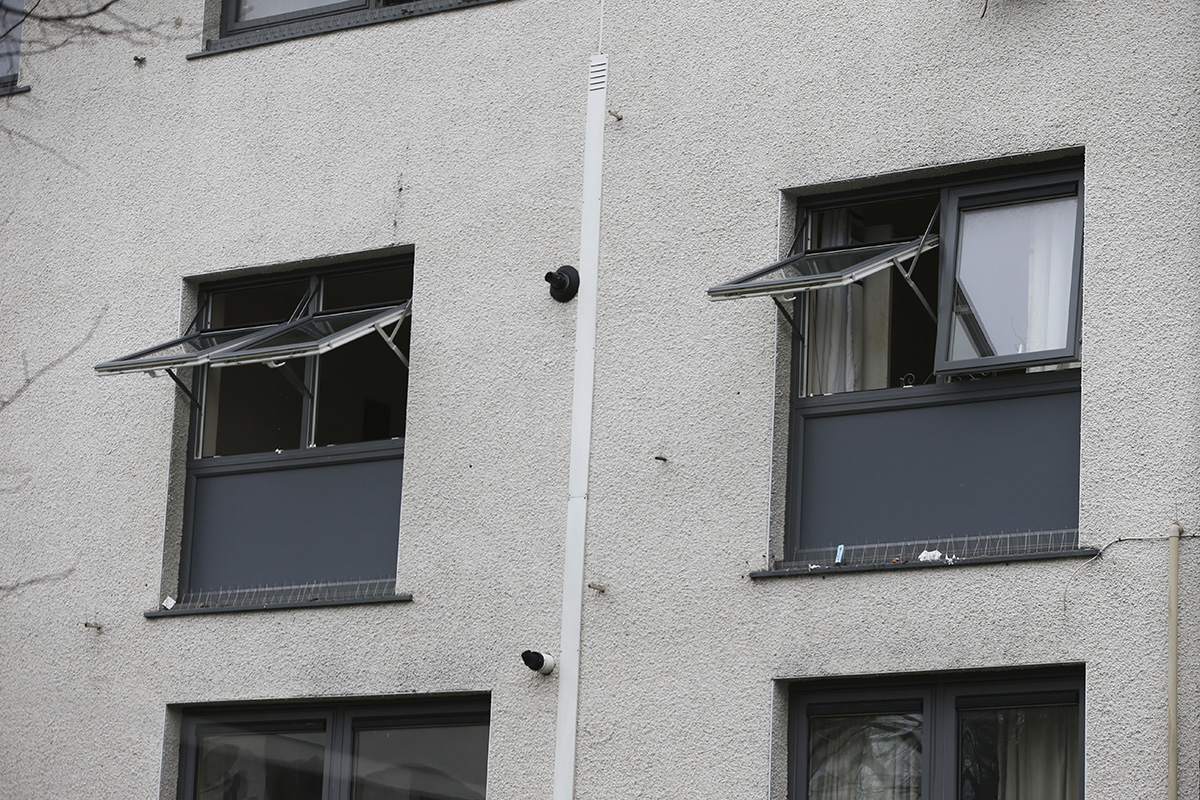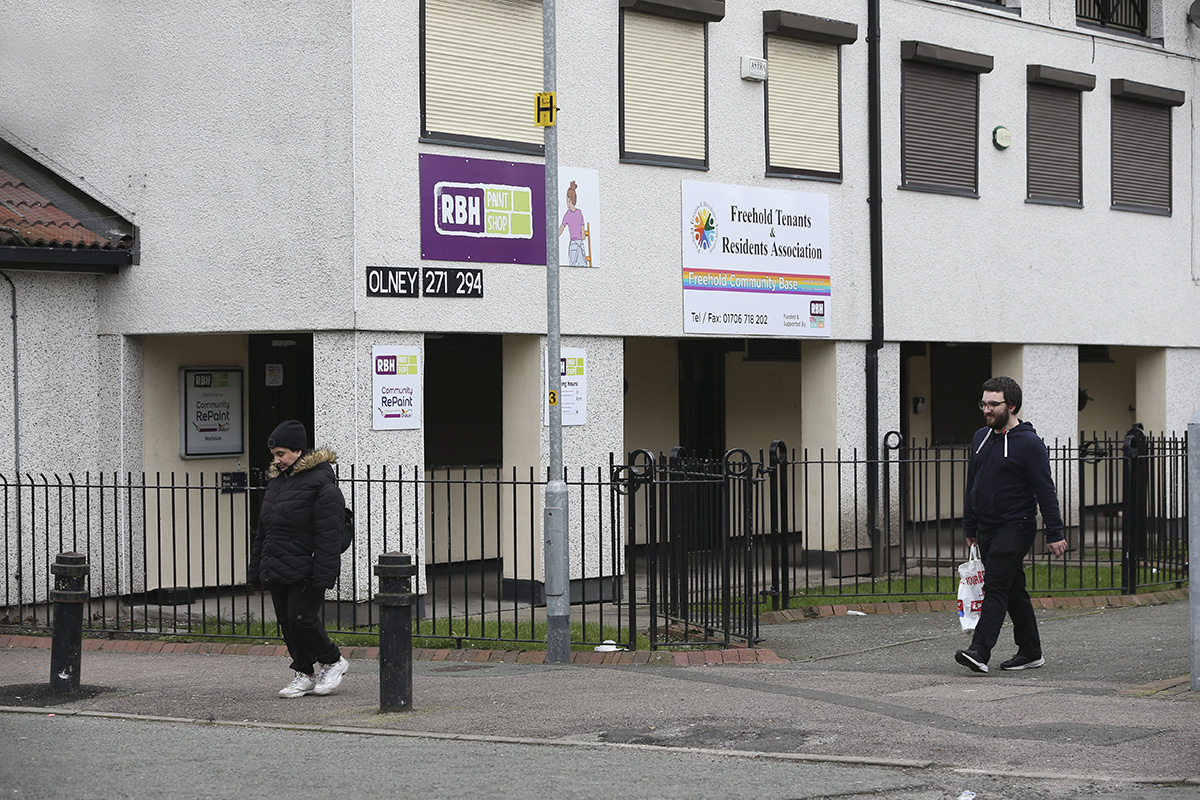Return to Rochdale: what has changed since the inquest into Awaab Ishak’s death
After the inquest into the death of two-year-old Awaab Ishak, it came to light that 80% of the residents on the estate where he lived were still suffering from damp and mould. Rochdale Boroughwide Housing set out an action plan to fix these problems. Grainne Cuffe visits the estate to find out what work is taking place. Photography by Lorne Campbell
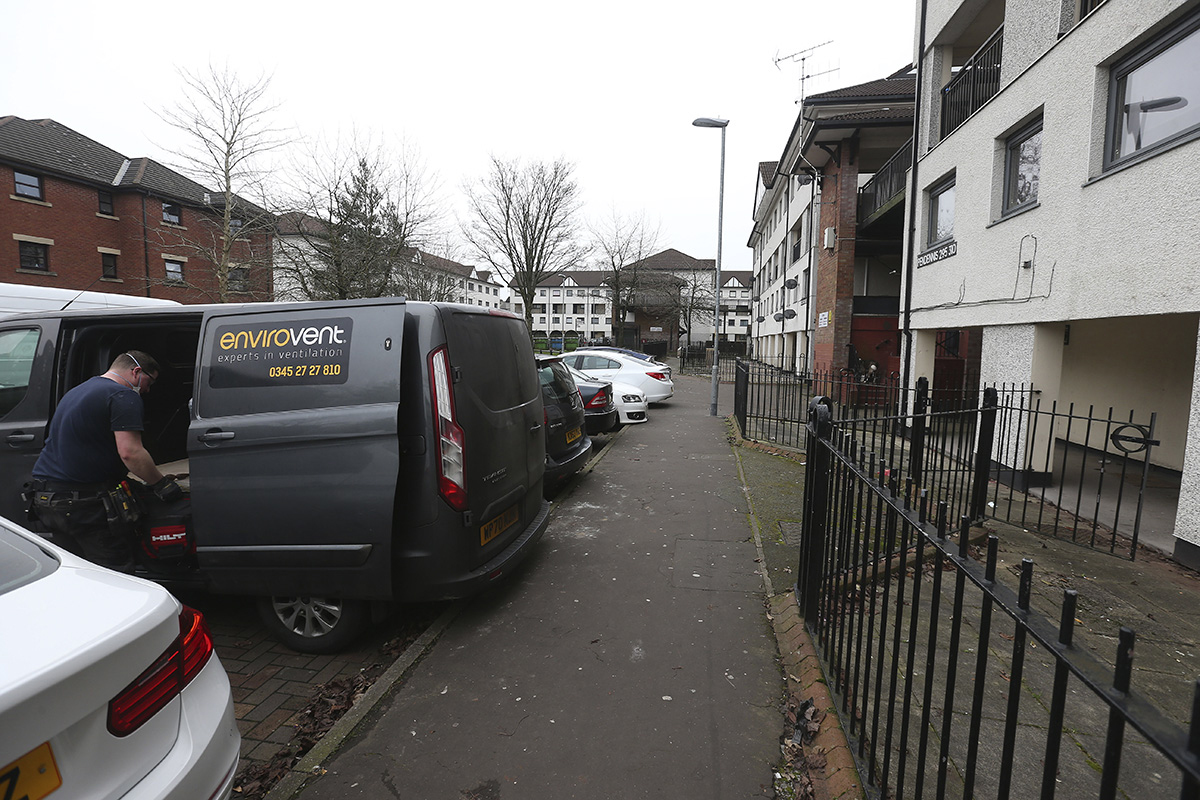
“I’ve had to buy four or five different mattresses. The mould keeps coming back,” says Vivien Holly, who lives in a flat with her child and parents on the Freehold Estate. There is black mould under the bed on which her one-year-old son is sleeping.
You’ve probably heard of the Freehold Estate before – it is the same estate where Awaab Ishak lived for his short life, before he died at the age of two, having been exposed to mould.
It is now just over two years since Awaab’s death, and three months since the inquest found he died from a severe respiratory condition caused by prolonged exposure to mould in his Rochdale Boroughwide Housing (RBH) flat. Inside Housing returned to Freehold to find out if the landlord is following through on promises to tenants still living with damp and mould.
After the inquest, the Regulator of Social Housing released its own report, which it had been working on in the background. It downgraded RBH from G1 to G3, finding “significant failings” in the way the organisation deals with damp and mould. RBH promised swift action, and to install ventilation systems that would alleviate the problems.
Ventilation
The regulator revealed that, for nearly two years after Awaab’s death, RBH failed to survey the estate where he had lived. When it did, almost 80% of the homes were found to have some level of damp and mould.
The regulator also found RBH in breach of the Home Standard and parts of the Tenant Involvement and Empowerment Standard, which led to “actual and potential serious detriment” to tenants.
The day RBH was downgraded, it shared details of its recovery plan. This included the creation of a new damp and mould task force, with the aim of responding to reports quicker. Significantly, the housing association started a £1.2m programme to improve ventilation in every home on the Freehold Estate.
When Inside Housing visited, one of the first things visible on the estate was an RBH repairs van. Over the course of a day, a few could be spotted parked or driving around. A van from EnviroVent was also on the estate. This is the company RBH hired to install kitchen fans and a “whole house” positive input ventilation (PIV) system .
Yvonne Arrowsmith is the interim chief executive who stepped in after Gareth Swarbrick was fired by the RBH board. In a statement, she told Inside Housing: “We are prioritising any work to tackle damp and mould through our task force, as well as taking proactive and single-minded steps to identify any damp and mould within RBH homes.
“Where we find a case of damp or mould, we prioritise based on vulnerability and health risk. We aim to take action within 24 hours for those at the highest risk and deal with all cases as swiftly as possible.”
But residents on the estate, like Ms Holly, say they are still experiencing problems. “I have the heating on way too much, but I have to protect [my son]. Every time I wash the mould it seems to come back even worse. [My son] is OK now, but I don’t know about the future. I cough sometimes and I don’t know why. I’m scared for my son,” she says.
The 26-year-old wants to move to a different property, and this has become more urgent because she is worried about her son’s health. “I’ve been bidding for a year, but have got nothing,” she says.
A RBH spokesperson says: “We are working to schedule the installation of the PIV unit with our tenant as quickly as possible, alongside any other work required.”
When Inside Housing visited the estate, we spoke to several residents who had the new ventilation systems installed and they were content with the work. “They came in, spent two days putting in the vents, and I’m very happy with it,” one woman said.
Several others said they had never had any issues with RBH. “My boiler breaks down from time to time, but they always come and fix it quickly,” one man said. But this was not everyone’s experience.
Karina Alvarenga (above) lives with her three children, niece and nephew in a three-bedroom flat. She says she feels “abandoned” by RBH.
Damp and mould is recurring in the rooms, while there is little ventilation throughout the flat. She says she has contacted RBH “many times”, but the landlord has only painted her children’s room and worked on the bathroom once in the six years she has lived on the estate.
“I think [the damp and mould is there] because the house doesn’t have a fan, especially the bathroom,” she says, adding that RBH did install a fan once, but that they covered it over. The family is forced to leave the windows open during the day to air the flat out. Because the rooms are so cold, Ms Alvarenga had to buy a heater and is spending £50 per week on heating. “It’s too much. But I need the place to be good for the kids,” she says. Ms Alvarenga says she has never failed to pay her rent.
“I feel like they don’t care about people. They think it’s our problem, you can fix it, even though you pay rent.
“They need to be more interested in the people who live here. It’s not just me. So many people have the same problems. I’m scared. I’m cleaning all the time, but it looks like we live like animals.”
Asked about her case, RBH says: “We’ve expedited the installation of the new ventilation unit following discussion with our tenant, as well as working quickly to schedule the other work requested.”
As part of its action plan, RBH says it has introduced new translation tools to help communicate with tenants. The inquest heard that Awaab’s mother had been upset when she showed an RBH technical inspector around her home the month before her son died, but English was not her first language and the worker admitted he had no access to an interpreter.
During his visit, the inspector found there was no effective ventilation in the bathroom, as the fan worked, but very poorly. The kitchen had no mechanical ventilation at all.
Awaab’s Law
A week after the inquest into Awaab’s death concluded, the Regulator of Social Housing demanded all social landlords provide assurance that they have a “clear understanding and strong grip on damp and mould issues in their homes” and are addressing risks to tenants’ and residents’ health.
The initial findings revealed that hundreds of thousands of social homes in England have at least a “notable” amount of damp and mould.
Around 8,000 have levels so severe that they “pose a serious and immediate risk to health”.
In what arguably might have the most significant impact on the sector to date, the government announced in February that it is amending the Social Housing (Regulation) Bill to include ‘Awaab’s Law’.
Awaab’s family have been calling for the creation of the law to give social tenants more protection. It will mean landlords are legally obliged to fix health hazards within strict time limits.
The family wants 14 days to investigate and seven days to make repairs. The government is consulting on whether that can be achieved, but housing secretary Michael Gove said those time limits “seem reasonable”.
Faisal Abdullah, Awaab’s father, told ITV journalist Daniel Hewitt: “We hope that Awaab’s Law will help stop any other family going through that pain we have gone through.”
Housing management
What is clear is that the death of Awaab did not bring about the changes it should have. It was only after a pre-inquest review into the case in June 2022 – a year-and-a-half after Awaab died – that the estate was surveyed.
In fact, more than eight months after the toddler’s death, Nadhia Khan, director of customer and community at RBH, gave a presentation at an industry event on what good housing management looks like.
Titled ‘Making a difference and the impact of good housing management’, the presentation first covered what bad management looks like. It cited poorly maintained homes and neighbourhoods, no communication and a “lack of respect”.
It then went on to present RBH as an organisation that was having a positive impact on communities through “good housing management”.
Back in Ilminster, the block where Awaab lived, Tafeka Hassan is pregnant. The 34-year-old says she has been living with damp and mould for eight years. Ms Hassan, who also washes down the mould herself, no longer sleeps in her bedroom for fear she and her unborn child will become sick.
“What they are doing now doesn’t take away the pain. It’s been eight years of pain. The damp and mould keep coming back, it never goes away. I am afraid for my child and [the council] put me in priority band D.
“I have to do everything myself. I paint the walls, got a different radiator fitted. I can’t wait for them. They tell me you’ve got to wait 10 years [for upgrades to her property]. I say I’ll be dead in 10 years,” she says.
RBH says: “We are working closely with the tenant on her rehousing application with a view to finding her a new home quickly.”
Adam, who did not provide his surname, lives in another block on the estate. He says he has been without heating for seven months and there is damp and mould throughout his flat. He is taking legal action against RBH. “They offered me a little heating fan thing. They haven’t improved at all,” he says.
RBH says: “We’re working to schedule the work requested as quickly as we can at a time which is convenient to our tenant.”
Harvinder Singh says he is no longer able to sleep in his bedroom because of a leak. The ceiling has pockets of water, which drip onto his bed. He has been complaining for months. “I have to keep the plastic on the mattress. They don’t do anything. I’ve been paying rent here for 14 years and have never asked them for help before,” he says.
RBH says: “We are working to schedule the work requested by our tenant as quickly as we can, at a time which is convenient to him.”
Works take time and RBH’s Freehold programme cannot happen overnight. The landlord has made many promises, which could change lives. But as the regulator concluded when it deemed RBH non-compliant in December, the failure on this estate was in large part down to extremely poor housing management. It found “significant failings” in the way RBH dealt with damp and mould, and it failed to survey the estate for nearly two years after Awaab’s death. The regulator concluded that RBH’s repairs and maintenance service did not respond to the needs of Awaab and his family, as well as a significant number of other tenants on the Freehold Estate. It found the landlord failed to communicate with them in an appropriate way.
As it stands, some tenants feel this is still the case. There are still homes that need repairs, there are still people afraid for their health and, most importantly, there are still children and vulnerable people being exposed to mould.
Sign up to our Best of In-Depth newsletter
We have recently relaunched our weekly Long Read newsletter as Best of In-Depth. The idea is to bring you a shorter selection of the very best analysis and comment we are publishing each week.
Already have an account? Click here to manage your newsletters.

